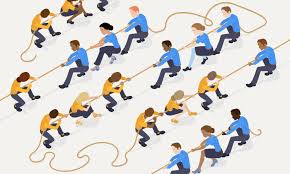Questions on the 25% Solution
There was a lot of interest in our last newsletter piece, “The 25% Solution.” After reflecting on the comments, I thought it might be worthwhile to discuss. The most common comment or question goes something like this:
“I’ve tried this but it just seems to make the other party angry or annoyed. Then they push back, dig in or take a hard line. What’s going wrong?”
I’ve been in the position where I’m the one that’s annoyed. In these cases I don’t get the feeling that the other party is understanding or even hearing my objections. It could be they are not taking my position seriously or understanding my requirements or constraints. They might be offering suggestions or alternatives but they haven’t understood or acknowledged the sources or real reasons for the “conflict” or my discontent.
Before the two parties can work collaboratively, there has to be an understanding of the differences, by both sides. That means coming to an initial or preliminary “agreement” about the conflict, that it is OK to have differences, and an understanding of the root causes.
That may sound too simple, but here’s the rub. In the situation where I’m the annoyed party, it is usually the case that I haven’t expressed things in way the other party comprehends. Or, I haven’t even gone into it, assuming my objection should be obvious. Maybe I’ve just left out a few details that complete the picture. If I’m already annoyed I feel like it’s a waste of my time to explain or re-explain the obvious. If I’m angry, I can’t even see that this is going on.
If you’re on the other side of this, what you need to do is patiently, calmly and reassuringly work to get out the other person’s story. This is not easy and goes against human nature: it means you have to stay within the conflict when our instincts tell us to defuse it or run away. While part of the job of a negotiator is to voice your side of the story, your narrative, the other part of the job is to work to fully surface the narrative of the other party. This requires a mindset of curiosity and some empathy. Only after both sides have told their stories and come to an understanding of the conflict can you collaboratively work on finding creative solutions.

Finally, keep in mind that, in any particular instance, this approach may get you nowhere. It happens. Even so, we’d recommend you make a habit to give it a try. You can always fall back to another approach, like going to your bottom line or walking away. But when it does work, you’ll make some great creative deals and you’ll be building the basis for a better relationship with the other side. Sometimes just your effort to really understand the other parties’ problem–even if you don’t work out a deal–goes a long way to creating openness and building long-term trust.

